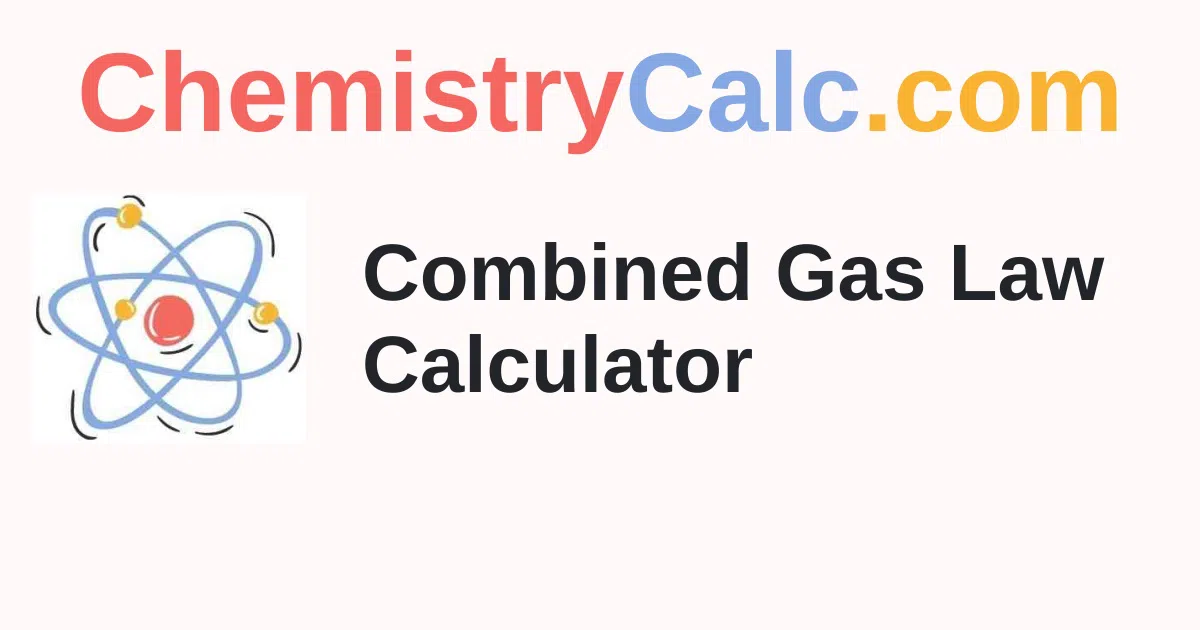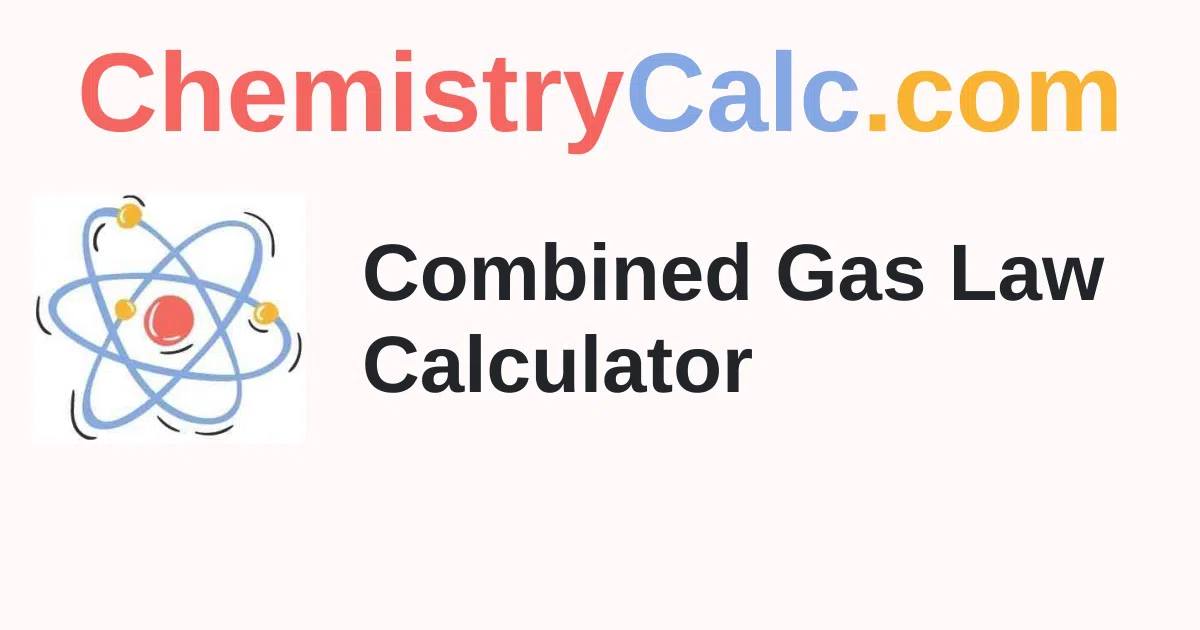Combined Gas Law Calculator
Make use of the Combined Gas Law Calculator to find the unknown parameters temperature, pressure and volume. You have to enter the known details and click the calculate button to get the output in a fraction of seconds.
Steps to Calculate Combined Gas Law
Have a look at the simple process of calculating the temperature, pressure and volume of the combined gas law equation.
- Make a note of the gas initial parameters and final parameters.
- Get unknown parameter variables and convert the combined gas law formula.
- Substitute the given values in the formula and solve to obtain the result.
What is Combined Gas Law?
The combined gas law is a law that combines three laws. They are Boyle's law, Charle's law and Fay-Lussac's law. These laws relate one thermodynamic variable to another one or constant. The interdependence of variables represents combined gas law and which states that the ratio between the product of pressure, volume and temperature remains unchanged.
Combined Gas Law Formula
Mathematically, combined gas law is expressed as follows:
PV / T = K
Where,
P is the pressure
V is the volume
T is temperature
K is constant
If two substances are compared in two different conditions, the law can be stated as,
(P₁ * V₁)/T₁ = (P₂ * V₂)/T₂
Where,
P₁ is initial pressure
T₁ is the initial temperature
V₁ is the initial volume
P₂ is final pressure
V₂ is final volume
T₂ is final temperature
Combined Gas Law Derivation
Combined gas law is a mixture of three different laws i.e Boyle's law, Charle's law, Gay-Lussac's law.
Boyle's law is PV = K, Charles law is V/T = K and Gay-Lussac's law is P/T = K
As all the laws are equal to constant, equate them
PV = V/T = P/T
PV/T = K
For two different conditions of a substance, the law is (P₁ * V₁)/T₁ = (P₂ * V₂)/T₂
Example:
Question: The initial volume of a gas is 5L and the final volume is 3.5L. Calculate the final pressure of the gas, if the initial temperature is 273 K, the final temperature is 220 K, and the initial pressure is 25 kPa.
Answer:
Given that,
Initial pressure P₁ = 25kPa
Initial volume V₁ = 5 L
Final Volume V₂ = 3.5 L
Initial Temperature T₁ = 273 K
Final Temperature T₂ = 220 K
Final pressure P₂ = ?
According to the combined gas law, (P₁ * V₁)/T₁ = (P₂ * V₂)/T₂
(25 * 5)/273 = (P₂ * 3.5)/220
125/273 = (P₂ * 3.5)/220
0.4578 * 220 = (P₂ * 3.5)
100.7/3.5 = P₂
P₂ = 28.78
Therefore, the final pressure of the gas is 28.78 kPa.
If you ever need help on various chemistry concepts right after your class you can always have a look at Chemistrycalc.Com and clear all your ambiguities.
FAQ’s on Grams to Moles Calculator
1. What is the combined gas law?
The combined gas law states that the ratio of the product of the pressure and volume to the temperature remains constant. It is a combination of three laws Boyle's law, Charles law and Gay-Lussac's law.
2. What is the difference between ideal gas and combined gas law?
Combined gas law relates the parameters pressure, temperature and volume whereas ideal gas law relates all these parameters along with the number of moles.
3. What is the combined gas law equation?
The combined gas law formula is K = PV/T or (P₁ * V₁)/T₁ = (P₂ * V₂)/T₂.
4. Why is the combined gas law important?
The combined gas law allows you to derive the relationships needed by combining the changeable pieces in the ideal gas law namely pressure, volume and temperature.

